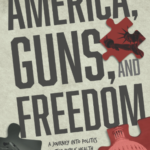Groundhog Day: The 60s
In his book, Framing the Sixties: The Use and Abuse of a Decade from Ronald Reagan to George W. Bush, Bernard von Bothmer, a professor of American history at the University of San Francisco and Dominican University of California, “examines the ways in which four presidents [Reagan, George H.W. Bush, Clinton and George W. Bush] used their own selective versions of the 1960s for political gain in the years from 1980 to 2004. It focuses on their conscious manipulation of five topics: John F. Kennedy, Lyndon Johnson’s Great Society, the Vietnam War, the civil rights movement, and the era of ‘the sixties’ in general.”
The movement that took Reagan from the capitol in Sacramento, Calif., to the White House in Washington, D.C. emerged in 1969-’71, with the pioneers of the new conservative movement: Reed Irvine, founder of Accuracy In Media (AIM), Phyllis Schlafly, who created the Eagle Forum, and Paul Weyrich and Ed Feulner, who established the Heritage Foundation.
When Bothmer asked Don Irvine, chairman of AIM, about his father’s inspiration for establishing the nonprofit, Irvine said he can remember watching news reports and looking at images of the Vietnam War, and how the 1968 photo of Viet Cong prisoner Nguyen Van Lem being shot in the head “resonated around the world” and increased anti-war sentiments. “[T]he media highlighted things that were labeled atrocities, but without going further and explaining a lot of the things behind it. . . . 1969 was the pinnacle of where sentiment turned, where (radical Left) activism just blossomed, and he [Reed Irvine] was determined to set the record straight.”
Irvine is correct in his opinion that the Pulitzer-Prize winning photograph taken by then AP photographer Eddie Adams, an ex-Marine who had served in the Korean War, only told part of the story.
In her March 2009 article, The Vietnam War, Through Eddie Adams’ Lens, NPR’s Margot Adler reports that Adams “believed to the end of his life that the picture only told part of the truth. The untold story was that on the day of the execution, an aide to [South Vietnamese national Police Chief Brig. Gen. Nguyen Ngoc] Loan was killed by insurgents. After Loan pulled the trigger, he walked by Adams and said, ‘They killed many of our people and many of yours.’”
Political activists, on the Left and Right, use vivid imagery from the decade to evoke emotion from their supporters; but Bothmer’s research reveals how presidential candidates—winners and losers from Reagan to Sen. John Kerry (D-Mass.)—have used the decade as a place holder to identify their role in rejecting or transforming its various movements.
Reagan “characterized his political rise as an antidote to the 1960s;” and George H.W. Bush campaigned against LBJ’s Great Society by using his 1991 commencement address at the University of Michigan to detail the residual problems of Johnson’s Great Society. Twenty-seven years earlier Johnson had used the same location to announce the program to the public. According to Bothmer, “. . . Bush likened the Great Society to socialism and proposed market-based solutions rather than government programs to address current problems.” He quotes Bush as saying: “When government tries to serve as parent or a teacher or a moral guide, individuals may be tempted to discard their own sense of responsibility, to argue that only government must help people in need. If we’ve learned anything in the past quarter century, it is that we cannot federalize virtue.”
Clinton compared his candidacy to that of JFK and the “good sixties”; whereas George W. Bush “promised to correct the errors of those who came of age during the 1960s.” And, during the 2004 election against Bush, Kerry attempted to use his service in Vietnam as a springboard to catapult himself over Republican accusations that Democrats are weak on defense issues. But Republicans took hold of Kerry’s anti-war stance, his role in the protests, and his Congressional testimony to project him as a candidate who exemplified the “bad sixties,” instead of what he had hoped for, which was to be a reflection of the values of the early-’60s.
Bothmer frames his conclusion by noting that from 1993-2009, the office of the presidency was occupied by two baby boomers, Clinton and Bush, whose opinions about that decade shaped their social policies and beliefs about the role of the government. Clinton’s philosophy is formed more by the liberal opinion that, “civil unrest and poverty can be cured by income redistribution;” and Bush’s by his belief in the philosophy of compassionate conservativism: “the power of religion to change people’s actions.” Bothmer explains that Bush also campaigned against “existing social ills that stemmed from the values of the 1960s, or ‘symptoms’: elitism, cynicism, anti-Americanism, self-absorption—enforced by psychobabble.”
He goes on to say that, “so long as politicians who came of age during in the 1960s continue to seek high office—and perhaps longer—the tensions of the era will retain their power.”
Barack Obama, the nation’s first post-baby boom president, has carried over the social ideals and policies of the Johnson administration’s Great Society. In the book, Joseph A. Califano Jr., an official during the Johnson administration from 1965-’68, describes the purpose of the Great Society: “. . . to redistribute opportunity and wealth and to empower poor people.”
Melissa Barnhart is an intern at the American Journalism Center, a training program run by Accuracy in Media and Accuracy in Academia.



